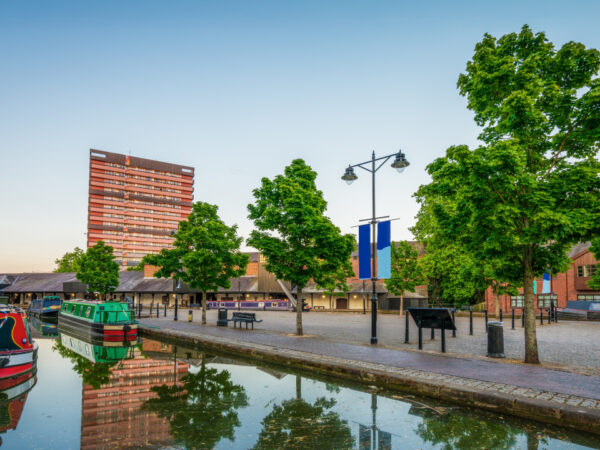News 21/09/2021
Ensuring Access Control Software Evolves to Meet the Challenges Ahead
Author: John Davies

There is one common thing we have all learnt from the last 18 months – you never really know what is ahead and need to be as flexible to change as possible. Its proof of the old cliché that you need to expect the unexpected. Whilst there has been a huge shake-up in the way society uses technology day-to-day, there still seems to be hesitation in some parts of the security industry when it comes to evolving access control systems in terms of flexibility.
It’s a topic I recently examined during an open presentation at The Security Event at the beginning of September, which was perfect timing to reflect on the rapidly changing security landscape of the last 18 months. I passionately believe that access control systems need to evolve to meet the challenges ahead – we need easy-to-use, powerful, fully cyber-secure and easily integrated solutions that synchronize with the wider business systems mix, whilst ensuring they aren’t compromised in their core duties.
Broadening choice
It’s always interesting to gauge security market reactions and demands and it’s fair to say greater integration of security and business systems has been a popular topic for some time now. However, having discussed this recently with many security installers and end users it’s clear this has accelerated even faster during the challenges of the pandemic. It’s not enough now to have a dedicated secure access control system that can link to other security and business technology, buyers also want flexible systems which are simple to install and use as part of their overall IT mix.
Many secure access control systems still require a dedicated proprietary desktop-based application that is running on a specific server. These systems may integrate with others, but ultimately, they are tied to one client server and need hardware that is configured for the job. In an age where most IT hardware is just an endpoint to specific services this is an antiquated approach.
From a security provider’s point of view this isn’t helpful either. Solutions are often a one-off sale that leaves less room for upgrades and requires a continuous sales churn to be profitable. The upgrade process is also more complicated and limited, the end user must choose to upgrade the solution and changes must be made to the installed software to gain new or improved features. All too often, upgrades are either forgotten or the end user is unwilling to pay for it.
Making access control more flexible
With the disruption of the pandemic and the subsequent retention of remote working for many employees, we are clearly seeing a shift in demand towards a more flexible approach to delivering physical security. This makes a Software as a Service (SaaS) model for security and access control systems the obvious choice.
By using a browser to access the service you do away with the need to host it on a powerful server or PC, all the storage and processing is accessed via a powerful but streamlined online portal. It’s very easy to add additional client connections without having to install new software applications on each individual hardware unit, and integration with other systems is all managed from a centralised hub – which can be securely hosted on premise or in the cloud depending on preference.
The speed of installation and use saves time and money, whilst locating the solution remotely with full encryption ensures it is harder to hack or compromise. At the same time, it makes integration with other business systems easier but also more secure. It also makes the addition of software upgrades/updates simpler to perform and less invasive on the operations of the security operator and end users.
Protecting your legacy
The other half of the equation is ensuring software support for all relevant hardware – physical security isn’t much use without it! Backwards as well as current/future compatibility provides greater flexibility to end users, allowing them to ‘mix & match’ existing and new components to find the right combination for the security needs and budgets available.
Developing software without this flexibility is little better than employing proprietary solutions. Equally, by adding up-to-date security protocols in the software you are immediately extending and improving the cyber and physical security of the existing working system, adding even further value but with minimal disruption.
Bringing secure access control up to date
Clearly SaaS is starting to dominate many other areas of technology for both businesses and individuals – just think about all the cloud-based business, banking, and entertainment solutions you probably already use. It makes complete sense for access control to offer this powerful flexibility.
Moving security to an affordable ongoing cost and doing away with the big capital expenditure investment patterns of the past is inevitable. With modern cyber-secure encryption and authentication, these powerful access control systems can be safely accessed by authorised people from virtually any location and on any modern device.
The security sector was already experiencing considerable changes in terms of not just technology, but also the way our customers want to procure and run their solutions. Over the last year and a half this has accelerated even more rapidly, but there are still a surprisingly large number of inflexible solutions on the market.
As we all face a less defined future its essential that the systems that protect our security and safety can adapt and evolve rapidly, to ensure these essential services don’t get left behind by the wider changes taking place in the way we live and work.
Other News
News 02/06/2025
TDSi Launches UK GARDiS Installer Training Offer
TDSi announces that it is offering a free Training Kit to individuals taking part in its official free GARDiS Installer Training Course for the first…
Read moreNews 28/05/2025
TDSi Joins Hirsch UK at Security Matters Live 2025
TDSi announces its forthcoming appearance at Security Matters Live 2025, which takes place on Thursday, 5th June at the CBS Arena in Coventry. Appearing alongside…
Read moreNews 05/03/2025
TDSi Launches GARDiS Software Version 3
TDSi announces the launch of GARDiS Software Version 3. This substantial software update provides a raft of new features and functionality, along with several new…
Read more
